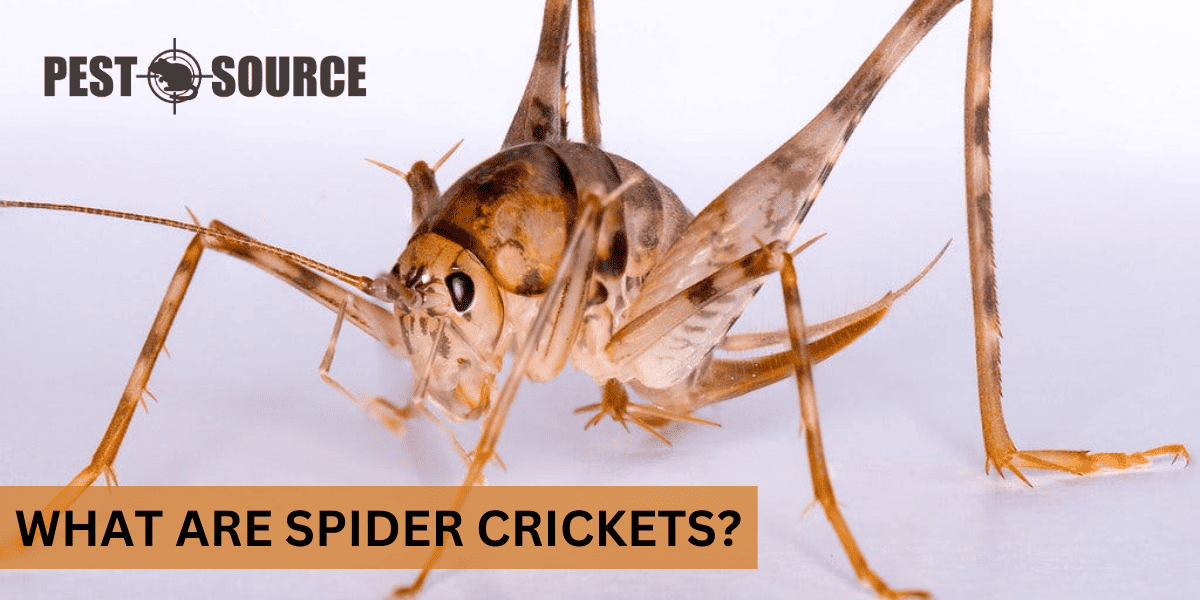Spider crickets, also known as camel and cave crickets, are a group of insects noted for their long legs and humpbacked appearance, resembling spiders. They lack wings and are known for their jumping ability. Understanding their characteristics and behavior is important for effective management and control.
Spider Cricket Attributes
- Control Methods: Sticky traps, environmental modification, insecticides, natural predators
- Indoor Infestation: Common in basements and garages
- Jumping Ability: Powerful jumps due to elongated hind legs
- Distinct physical features: Humpbacked shape, long hind legs
- Sensitivity to Light: Prefers low-light, dark environments
- Moisture Requirement: High reliance on moisture for survival
- Reproductive Method: Oviparous (egg-laying)
- Diet: Omnivorous
- Sensory Organs: Antennae, compound eyes
- Limbs: Six legs
- Family: Rhaphidophoridae
- Regions: Global
- Habitat: Damp, dark environments (caves, basements)
- Sounds: Limited or absent
- Nocturnal Activity: Highly active at night
- Lifespan: Several months to a year
- Size: 1 to 5 cm
- Wings: Wingless
- Color: Brown, tan, gray
- Also known as: Camel Cricket, Cave Cricket, Hogan Bug
How to Get Rid of Spider Crickets
Getting rid of spider crickets requires a multi-step approach. To effectively get rid of spider crickets, it’s important to eliminate their favorite habitats, such as damp and dark areas in basements, garages, and crawl spaces. Start by reducing humidity in these areas using dehumidifiers and fixing any leaks. Sealing cracks and openings around doors, windows, and foundations prevents them from entering the home. Using sticky traps can capture them effectively.
For a more aggressive approach, consider using insecticides specifically designed for crickets, but always follow safety guidelines to protect your family and pets. Regular cleaning and decluttering, especially in storage areas, also discourage their presence by reducing hiding spots.
How to Get Rid of Spider Crickets Naturally
Eliminating spider crickets naturally from your home can be a safe and eco-friendly method. To get rid of spider crickets naturally, use natural desiccants like diatomaceous earth, which is non-toxic and effective in eradicating these pests by damaging their exoskeletons. Another method is to set up homemade traps using sticky surfaces or deep containers filled with soapy water, which attract and capture them. Essential oils like peppermint or eucalyptus can act as natural repellents; spray diluted solutions around potential entry points.
How Do Spider Crickets Get In the House
Spider crickets can find their way into homes through various means. To understand how spider crickets get in the house, it’s essential to consider their natural behavior and habitat preferences. They typically enter through small cracks and gaps in foundations, walls, or around windows and doors, especially in search of moisture and cooler temperatures. Poorly sealed pipes and utility openings can serve as entry points as well.
Spider crickets are also known to hitchhike on plants, firewood, and other items brought inside from outdoors. To prevent an infestation, it’s crucial to seal potential entry points, reduce indoor humidity, and maintain a clean, clutter-free environment. Regular inspections of the house’s perimeter and immediate repairs of any structural damage can significantly reduce the likelihood of these crickets finding their way indoors.
What Attracts Spider Crickets
Spider crickets are attracted to certain conditions and environments. What attracts spider crickets is primarily the search for a moist and dark habitat, as they thrive in high humidity and avoid light. They are also drawn to organic materials, including wood, fabric, fungi, and other insects, which they feed on. Cluttered spaces provide excellent hiding spots and breeding grounds for spider crickets, making unkempt basements and storage areas particularly susceptible to infestation.
Additionally, these crickets are attracted to homes during extreme weather conditions, seeking shelter from hot, dry summers and cold winters. Understanding these attractions can help in effectively preventing and controlling their presence in your home. Reducing humidity with dehumidifiers, sealing cracks and openings, maintaining cleanliness, and eliminating food sources are effective strategies to deter spider crickets.
Where Do Spider Crickets Live
Spider crickets inhabit various environments depending on their lifecycle stage and environmental conditions. Spider crickets live in areas that are typically dark, moist, and sheltered. They are commonly found in natural habitats like under logs, stones, and in leaf litter, thriving in environments that provide humidity and protection from predators. These crickets are also prevalent in domestic settings, particularly in basements, garages, crawl spaces, and sheds where conditions mimic their natural habitat.
When Do Spider Crickets Come Out
Regarding their activity, spider crickets are nocturnal creatures. Spider crickets come out primarily during the nighttime, which is when they are most active. They search for food and mates during these hours, taking advantage of the cover of darkness. During the day, they tend to hide in their dark, moist environments to avoid predators and light. This nocturnal behavior explains why homeowners may not notice their presence until there is a significant infestation.
What Do Spider Crickets Eat
Spider crickets have a diverse diet. Spider crickets eat organic materials, both plant-based and animal-derived. In the wild, they feed on fungi, plant matter, dead insects, and even other small invertebrates. In domestic settings, they can consume fabrics, wood, cardboard, and other household items, especially if these materials are moldy or damp. This varied diet allows them to thrive in many environments, from natural settings to basements and garages.
Why Do Spider Crickets Jump at You
Spider crickets jump because of a defense mechanism rather than an aggressive action. Spider crickets are not predators and do not attack humans or larger animals. Instead, when startled or threatened, their natural instinct is to leap towards what scares them in an attempt to frighten it away. This behavior can be unnerving and is often mistaken for aggression. However, it’s important to understand that this is a reflexive action and they are not attacking. Knowing this can help reduce fear and improve methods for safely managing and removing them from human-occupied areas.



